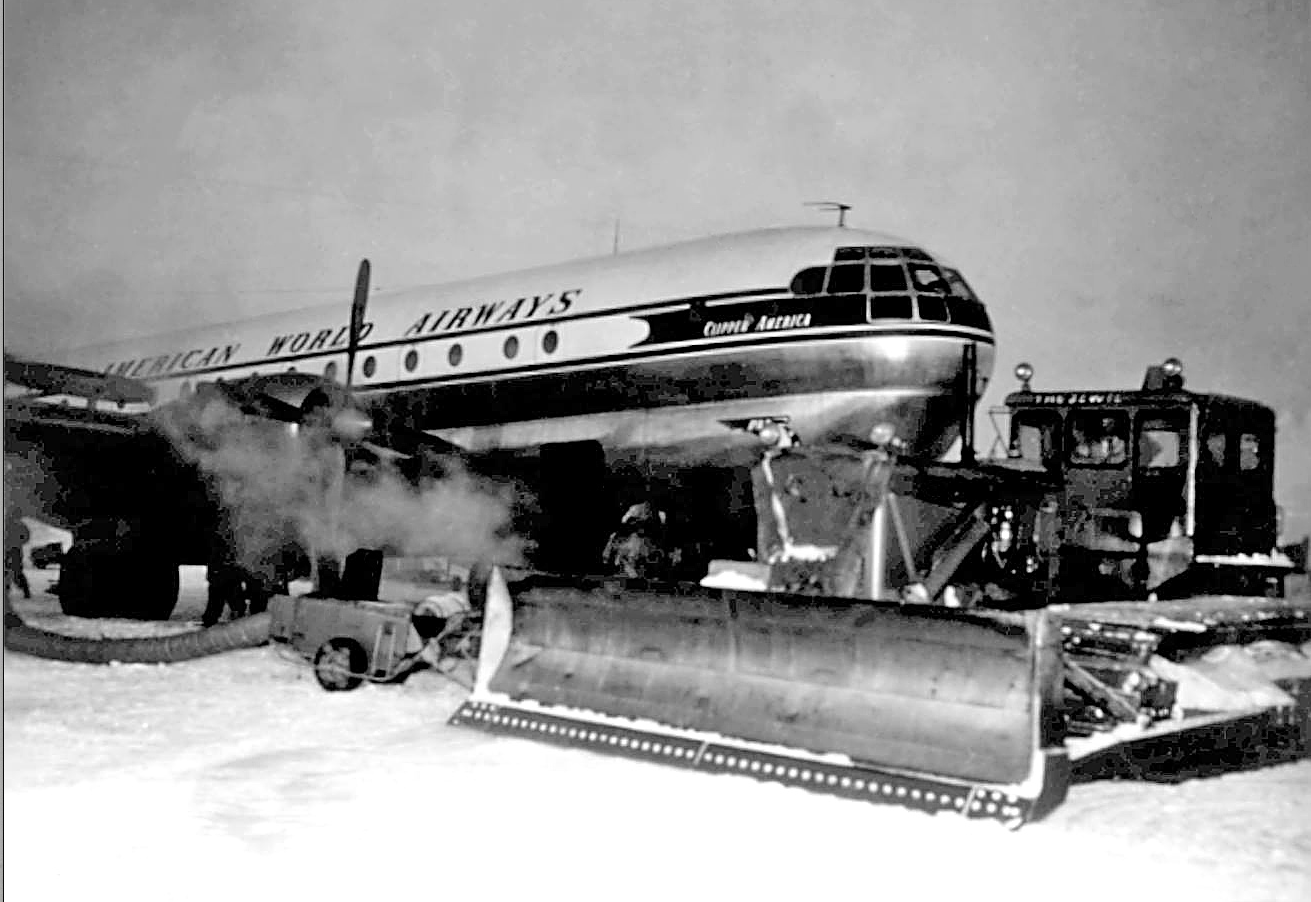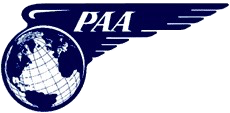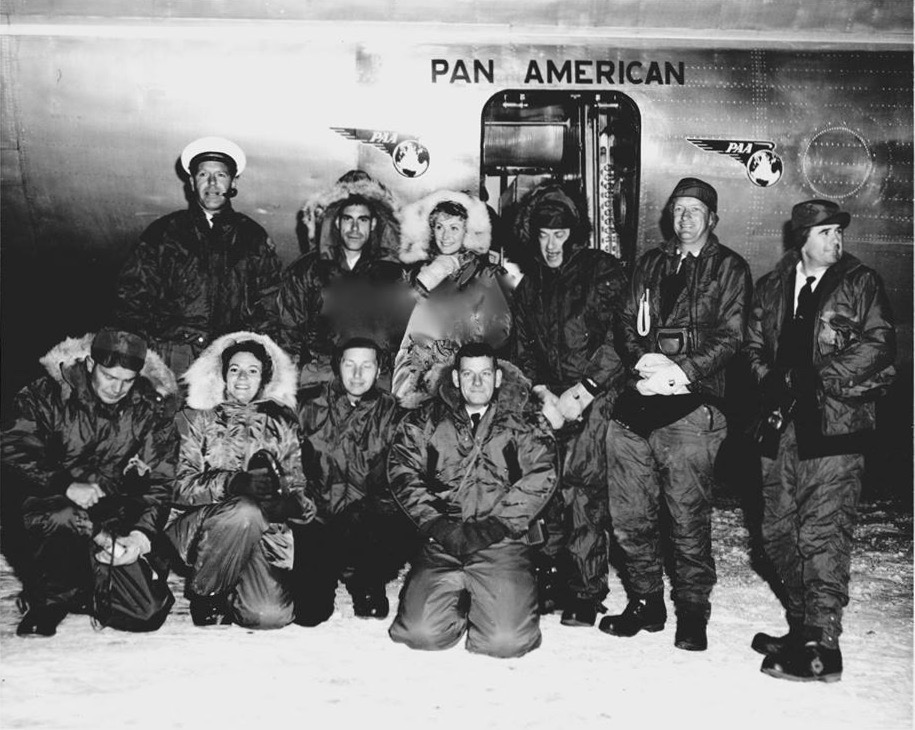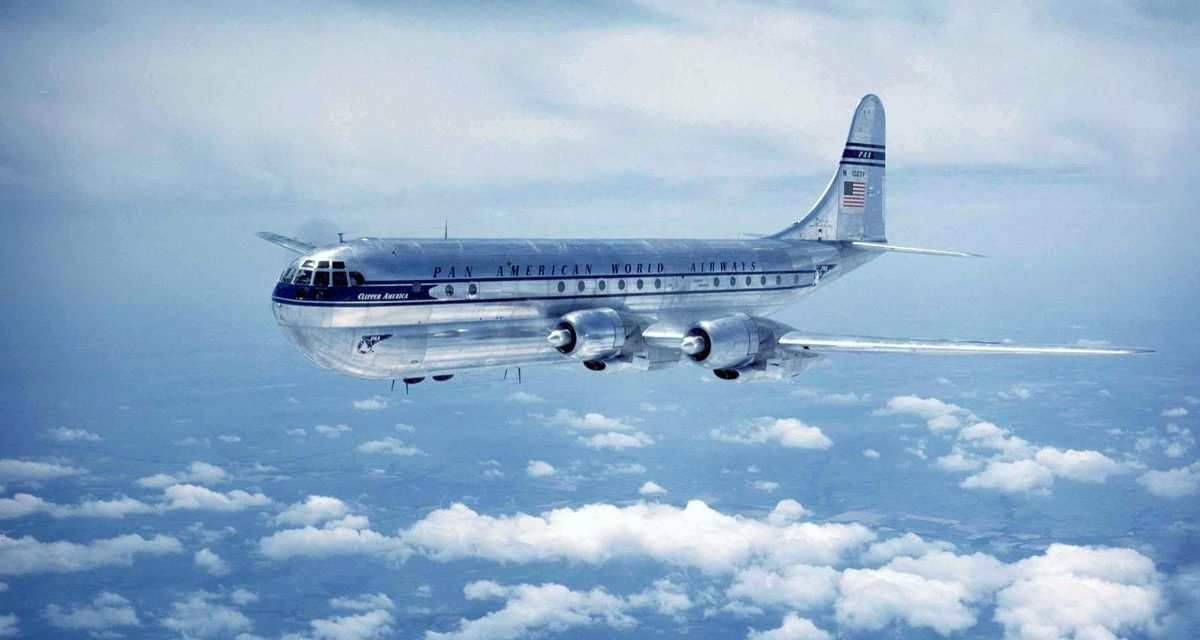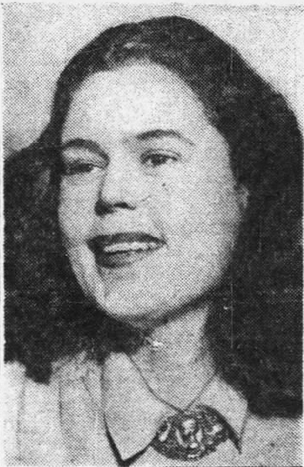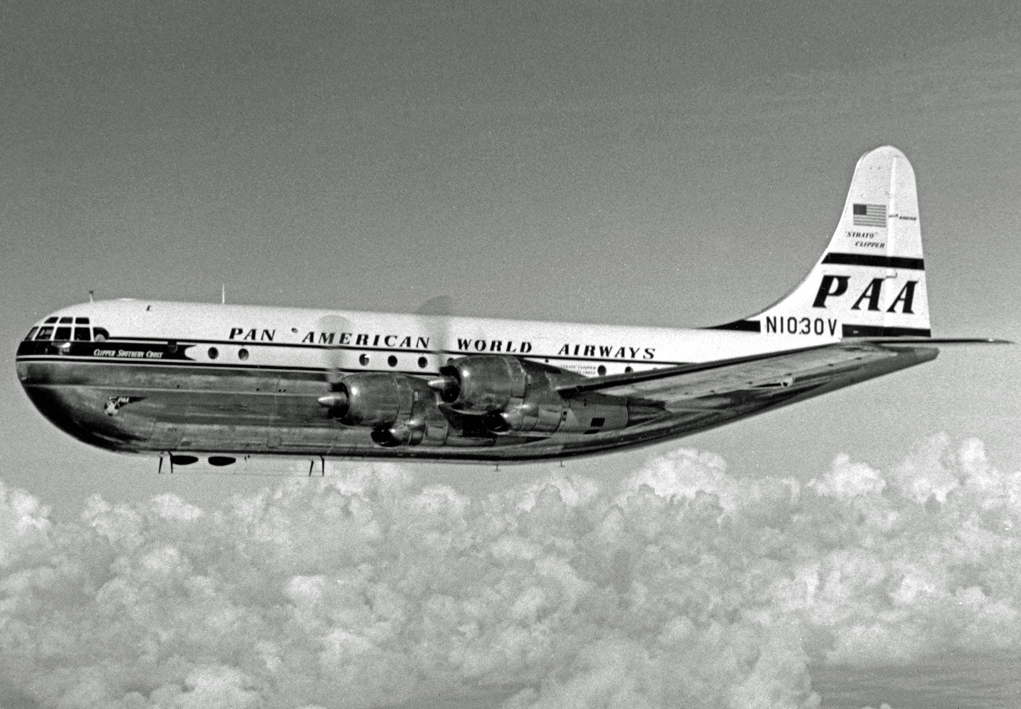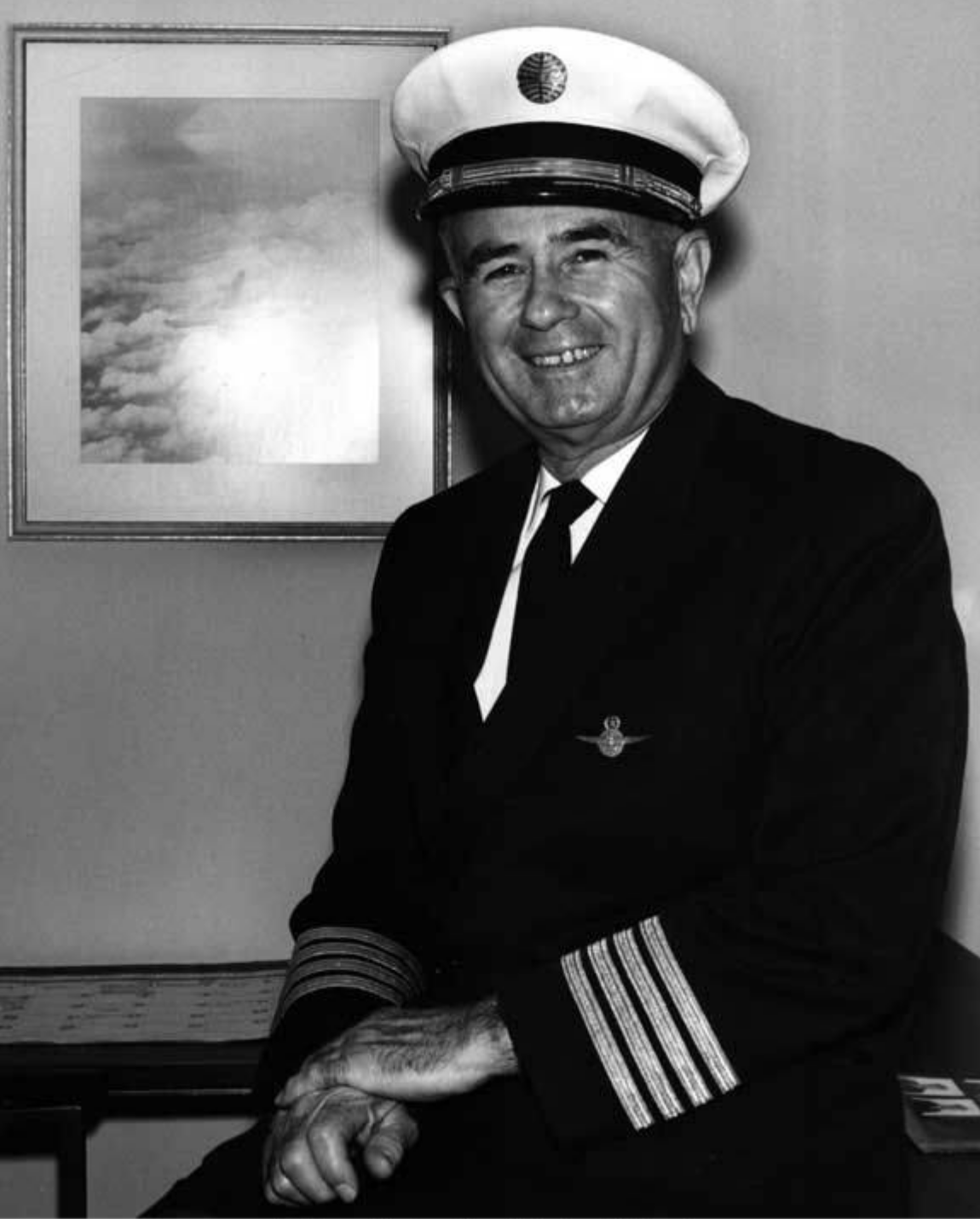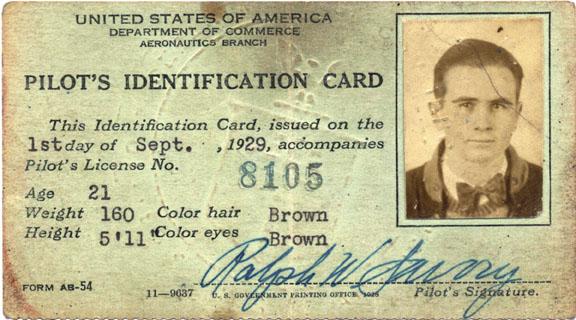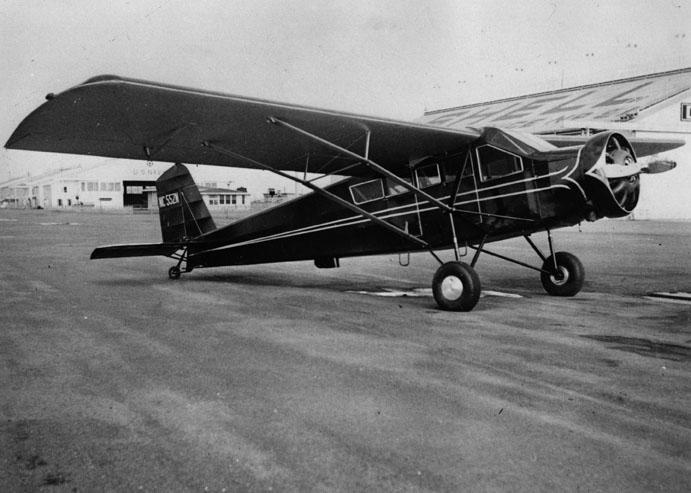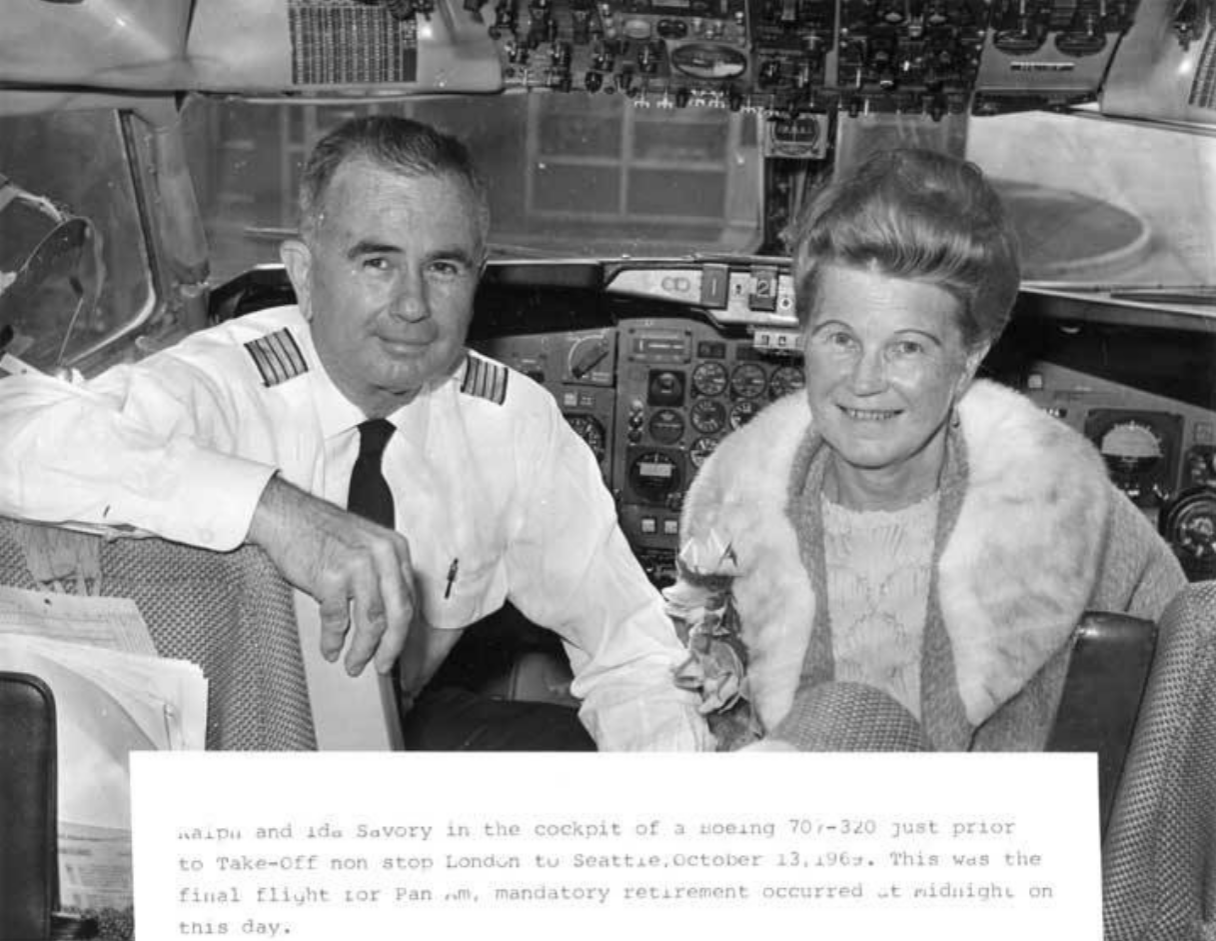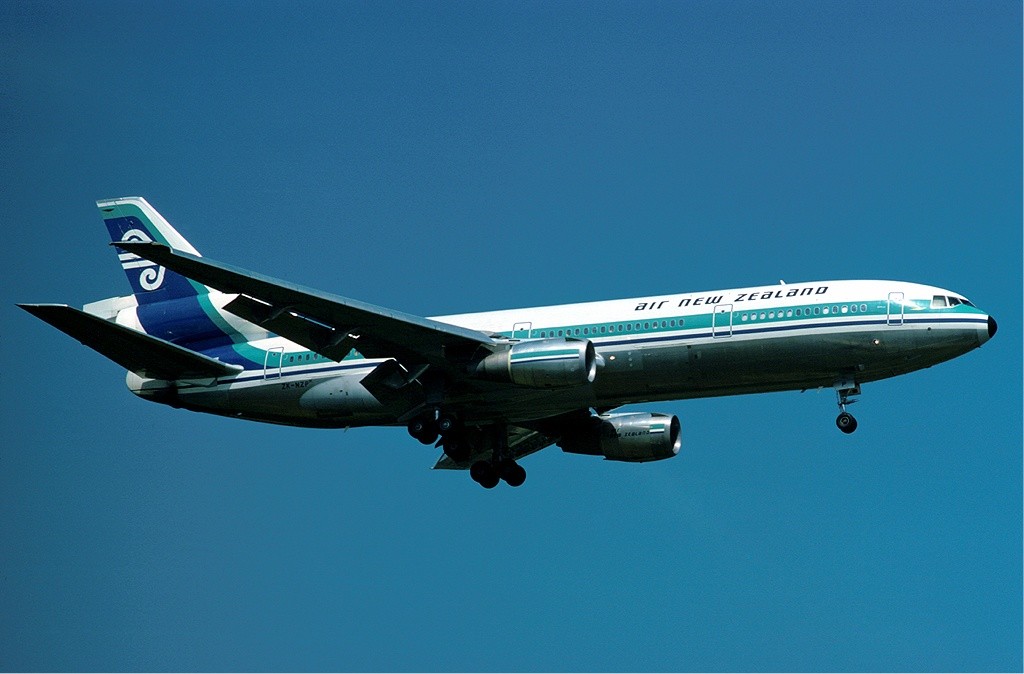

Air New Zealand had previously flown thirteen Antarctic excursions. On this date, the airliner operated as Flight TE 901 was a five year old McDonnell Douglas DC-10-30, registration ZK-NZP. On board the airliner were a flight crew of five, cabin crew of fifteen and 237 passengers.

The pilot in command (PIC) was Captain Thomas James Collins. Captain Collins held an airline transport pilot license with a DC-10 type rating. He had flown a total of 11,151 flight hours, of which 2,872 had been aboard DC-10s. Because of the flight’s planned duration, the crew included two more pilots, First Officer Gregory Mark Cassin and First Officer Graham Neville Lucas. There were also two flight engineers, Flight Engineer Gordon Barrett Brooks and Flight Engineer Nicholas John Maloney. All were very experienced pilots, type-rated in the DC-10. None, however, had previously flown the Antarctic route.
19 days before the flight, Captain Collins and First Officer Cassin had received an audio-visual briefing of the planned flight. They also flew the route in a cockpit simulator. The route of previous flights had taken the airliners from the Ross Sea into McMurdo Sound, well west of Ross Island and its 12,448 foot (3,794 meters) active volcano, Mount Erebus. At a pre-determined waypoint, the airliner turned left toward McMurdo Station. The airline’s minimum altitude through this area was 16,000 feet (4,877 meters) until south of McMurdo Station, and then only if certain weather conditions were present.
Air New Zealand flight planners had discovered that data which had been entered into the aircraft’s Area Inertial Navigation System (AINS) computer was incorrect. The coordinates of the for the destination waypoint were actually 2˚10′ west of the intended destination waypoint. The intended route was to take TE 901 directly over Mount Erebus to the emergency whiteout landing area near Williams Field (ICAO: NZWD) about 10 miles (16 kilometers) from McMurdo Station on the Ross Ice Shelf. Because of the data error, however, all previous flights had approached from well west of Ross Island before turning toward McMurdo Station at West Dailey Island. The navigation data was corrected, but the flight crew had not been informed of the change or the reason for it.
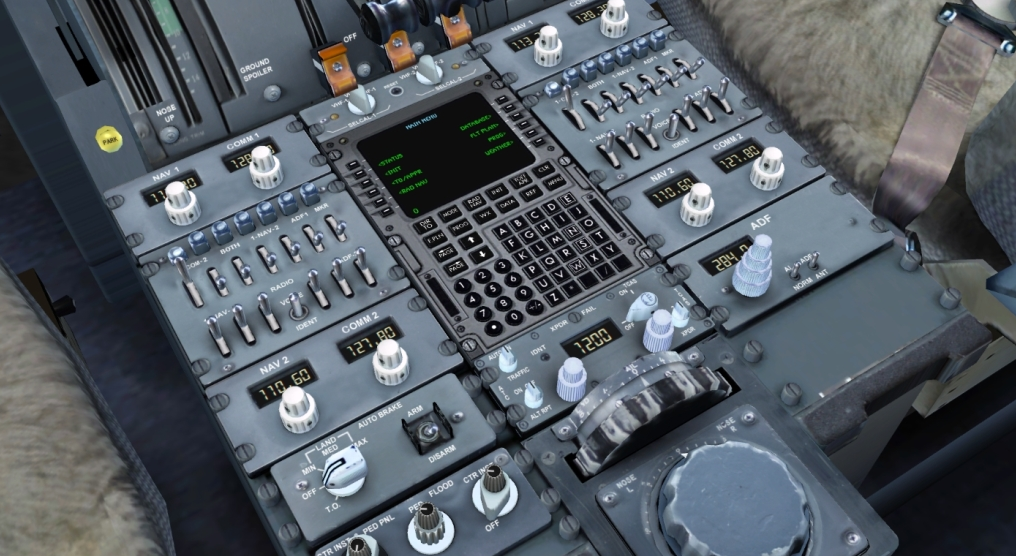
The flight toward Antarctica proceeded normally. Exactly five hours after takeoff, Captain Collins began a descent from TE 901’s cruising altitude. At this point the airliner was approximately 140 miles (225 kilometers) north of McMurdo Station. First Officer Cassin advised air traffic control, Mac Center, of their descent. The controller acknowledged and gave the current weather at McMurdo as “. . . low overcast in the area at about 2,000 feet [607 meters] and . . . some snow but our visibility is still about 40 miles [64 kilometers]. . . .” In the cockpit, Captain Collins commented that the clouds were lower than previously reported, and that, it would be, “Very hard to tell the difference between the cloud and the ice.”
First Officer Cassin requested descent to 16,000 feet (4,877 meters) but Mac Center directed the flight to “descend and maintain Flight Level 180.” (18,000 feet/5,486 meters)
Over the next six minutes, TE 901 traveled 50 miles as it descended to FL 180. Radio transmissions during the let down were unclear, with Mac Center, Flight 901 and Ice Tower all trying to make contact. It is possible that the high terrain between the airliner and McMurdo Station was blocking the signals. The pilots discussed using other frequencies. Captain Collins and Flight Engineer Brooks discussed the airliner’s present weight and the minimum speed required, which was calculated to be 252 knots.
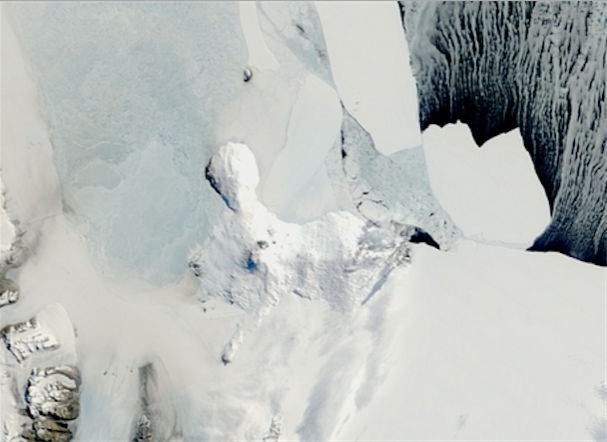
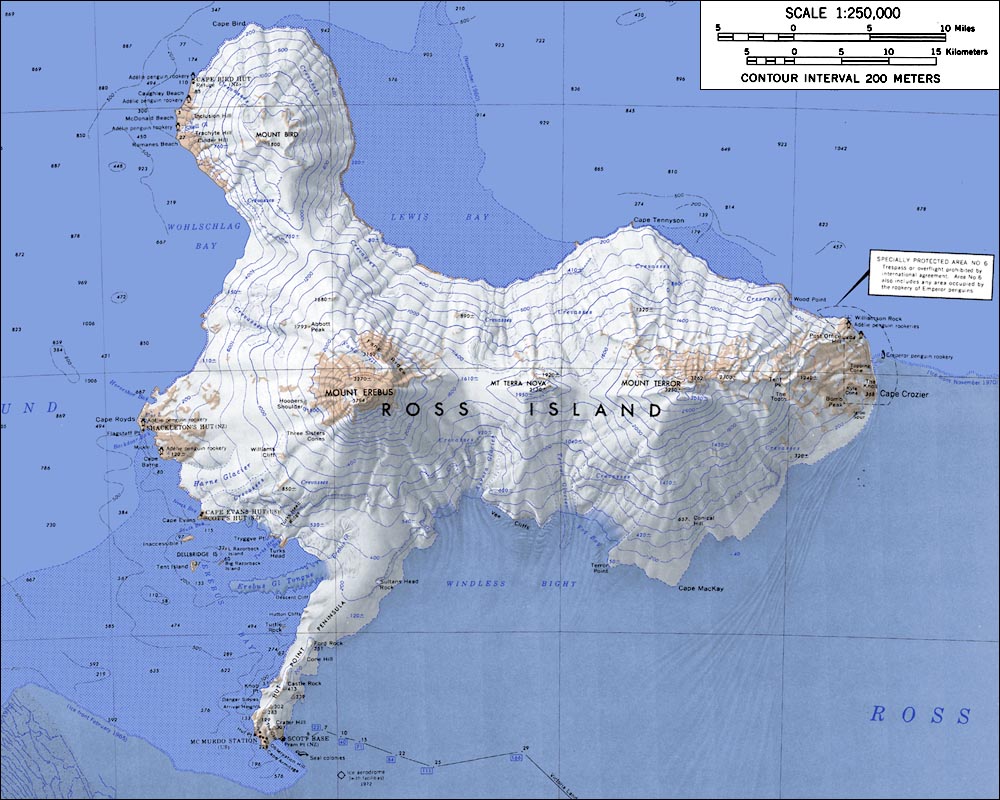
At 00:24:44, the DC-10’s Altitude Alert sounded, indicating that the airplane had reached the assigned altitude of Flight Level 180.
At 00:31:01, Captain Collins told the crew, “I’ll have to do an orbit here I think.” Seven seconds later, he said, “Well actually it’s clear out here if we get down. . .and—” Someone in the cockpit replied, “It’s not clear on the right hand side here.” First Officer Cassin said, “No.”
Captain Collins had observed an opening in the clouds to the left of the airplane, and decided to descend further under visual conditions. He first began a descending 360˚ turn to the right, followed by a descending 180˚to the left. This put the DC-10 on a course away from McMurdo Station at 10,000 feet (3,048 meters). Captain Collins and the two flight engineers discussed the desired airspeed. With the flight still continuing outbound, at 00:42:49, Collins said, “We’re VMC [Visual Meteorological Conditions] around this way so I’m going to do another turn in.” The flight’s expert commentator, Peter Mulgrew, had entered the flight deck. Captain Collins said, “Sorry haven’t got time to talk but—” Mulgrew replied, “Ah well you can’t talk if you can’t see anything.” However, Mulgrew remained in the cockpit.
At 00:45:00, First Officer Cassin called McMurdo Center and reported, “. . . we are now at six thousand descending to two thousand and we’re VMC.”
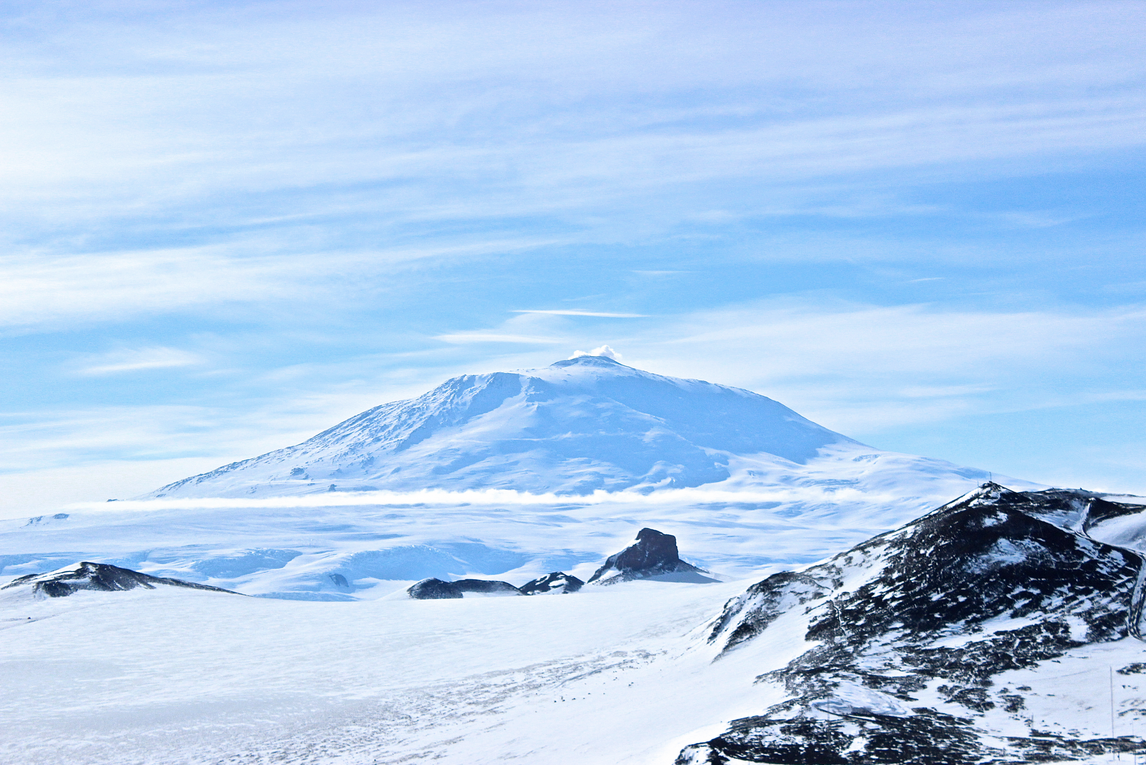
Passing through 3,000 feet (914 meters), Flight Engineer Brooks asked, “Where’s Erebus in relation to us at the moment?” Someone answered, “Left about twenty or twenty-five miles.” Someone else asked, “Left do you reckon?” A voice said, “Well I don’t know—I think.” An unknown voice said, “I’ve been looking for it.” Cassin replied, “Yep, yep.” Brooks then said, “I’m just thinking of any high ground in the area, that’s all.”
Mulgrew replied, “I think it’ll be left, yes.” The second flight engineer, Nick Maloney, then said, “Yes, I reckon about here.” Mulgrew answered, “Yes—no, no, I don’t really know.” Then at 00:47:02, he said, “That’s the edge,” probably indicating that he could see the edge of the ice sheet ahead.
At 00:47:06, a crewmember announced, “Down to two thousand.” Both Collins and Cassin acknowledged this, “Yes.” — “Yes.” The crew then set the flight director to hold airspeed and altitude.
At 00:47:43, Captain Collins said, “We might have to pop down to fifteen hundred here I think.” Cassin replied, “Yes, OK. . . Probably see further in anyway. . . It’s not too bad. . . I see vert speed for fifteen hundred feet.”
Flight Engineer Maloney said, “—It’s not right.” An unknown voice then said, “Bit thick here eh Bert?” Maloney replied, “Yeah my. . . . oath. . . (pause) You’re really a long while on . . . instruments this time are you?” Mulgrew then said, “I reckon Bird’s through here and—Ross Island there.” Maloney answered, “Yes,” and Mulgrew continued, “Erebus should be there.” Captain Collins says, “Right.” For the next forty seconds the crew discussed radio and navigation frequencies.
At 00:49:08, Mulgrew said, “That looks like the edge of Ross Island there.” Cassin attempted to contact McMurdo Tower. At 00:49:24, Maloney said, “I don’t like this.”
At 00:49:30, Captain Collins said, “We’re twenty-six miles north we’ll have to climb out of this.” Someone answered, “OK.” Cassin told Collins, “It’s clear on the right and (well) ahead.” Collins asked, “Is it?” Mulgrew said, “Yes.” Cassin, said, “No negative.” Cassin said, “No high ground if you do a one eighty.”
At 00:49:44 the airliner’s Ground Proximity Warning System is heard: WHOOP WHOOP—PULL UP—WHOOP WHOOP
00:49:48 Flight Engineer Brooks reports, “Five hundred feet.”
PULL UP
Brooks: “Four hundred feet.”
WHOOP WHOOP—PULL UP—WHOOP WHOOP
Captain Collins calls, “Go round power please.”
WHOOP WHOOP—PULL–
At 00:49:50 GMT, ZK-NZP struck gradually rising terrain at an elevation of 1,467 feet (447 meters) above Sea Level, while flying at 260 knots (299 miles per hour/482 kilometers per hour). The DC-10 was totally destroyed and all 257 persons on board were instantly killed by the impact. The site of the crash was on the north slope of Mount Erebus, approximately 31 miles (50 kilometers) north of McMurdo Station, at Latitude 77˚25’30” South, Longitude 167˚27’30″East.
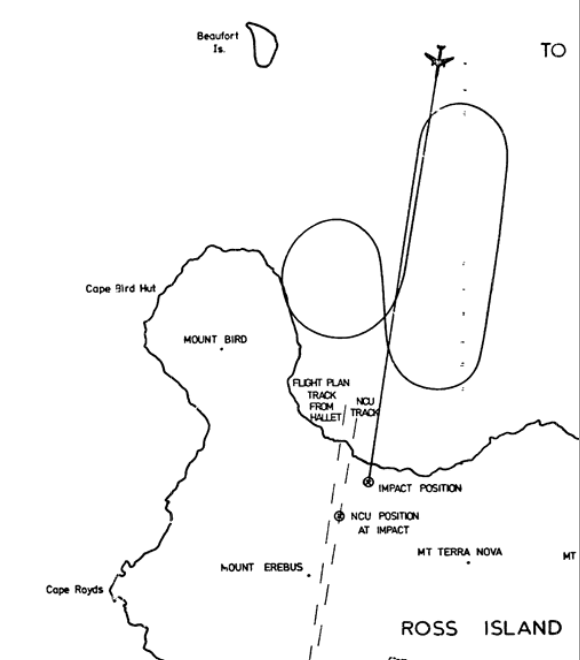
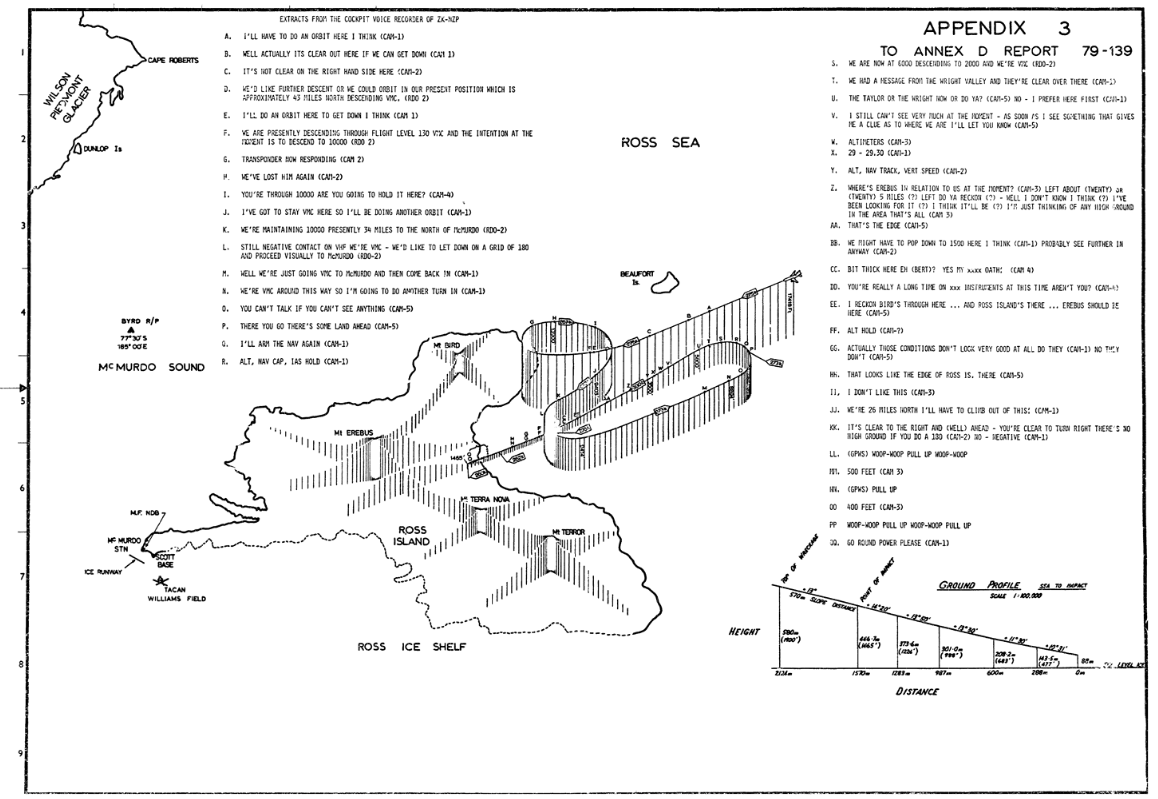
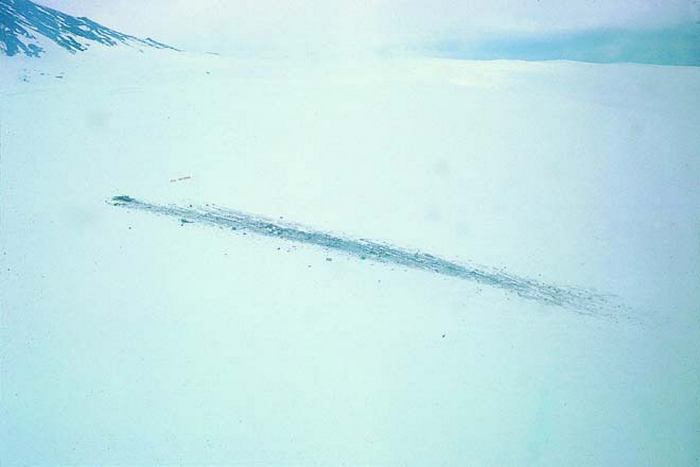
The intensive investigation of the accident showed that, based on the route briefing, the flight crew expected to be about 26 miles to the west. In fact, TE 901 had proceeded almost precisely along the planned track. Analysis of the navigation computer showed that its INS position was in error by just 3.1 nautical miles (3.6 miles/ 5.7 kilometers), well within its known tolerance. It was indicating almost the exact location of the flight, if anything, closer to Mount Erebus than it really was.
Much controversy ensued over who was at fault for the position error. Regardless of whether the flight was on the intended track, or on the erroneous track 25 miles west, the crew was fully aware that they were well north of McMurdo Station. Air New Zealand had established a minimum safe altitude of 16,000 feet (4,877 meters) until the flight was south of McMurdo.
3.37 Probable cause: The probable cause of this accident was the decision of the captain to continue the flight at low level toward an area of poor surface and horizon definition when the crew was not certain of their position and the subsequent inability to detect the rising terrain which intercepted the aircraft’s flight path.
—AIRCRAFT ACCIDENT REPORT No. 79-139, Transport Accident Investigation Commission (TAIC), New Zealand, Section 3.37 at Page 34.
ZK-NZP was a McDonnell Douglas DC-10-30, s/n 46910, built at the Douglas Aircraft Company’s Long Beach, California, plant during November 1974. It arrived in New Zealand 14 December 1974 for service with Air New Zealand Limited. The –30 was a long range variant of the DC-10 series. It is designed to be operated by a flight crew of three. It is 182 feet, 1 inch (55.499 meters) long with a wingspan of 165 feet, 5 inches (50.419 meters) and overall height of 58 feet, 1 inch (17.704 meters.) One of the original “wide body” jets, the cylindrical fuselage of the DC-10 has a diameter of 19 feet, 9 inches (6.020 meters).
The DC-10-30 was powered by three General Electric CF6-50C turbofan engines, rated at 51,000 pounds of thrust (226.86 kilonewtons) at Sea Level. The CF6-50 is a two-spool, high-bypass-ratio axial-flow turbofan engine. It has a single-stage fan section, with a 17-stage compressor (3 low- and 14 high-pressure stages, and a 6-stage turbine (2 high- and 4 low-pressure stages). The CF6-50C has a maximum diameter of 8 feet, 9.0 inches (2.667 meters), fan diameter of 7 feet, 2.4 inches (2.195 meters) and length of 15 feet, 8.0 inches (4.775 meters). It weighs 7,896 pounds (3,582 kilograms).
The DC-10-30 has an empty weight of 266,191 pounds (120,742 kilograms) and maximum takeoff weight of 572,000 pounds (259,455 kilograms). ZK-NZP, operating as Flight TE 901, had an “all-up weight” of 199,150 kilograms (439,051 pounds), and for the conditions of this flight, the MTOW was calculated to be 253,105 kilograms (558,001 pounds). It’s actual takeoff weight was 246,507 kilograms (543,455 pounds).
The typical cruise speed of the DC-10 is 0.82 Mach (556 miles per hour, or 895 kilometers per hour, at 30,000 feet/9,144 meters) and its service ceiling is 42,000 feet (12,802 meters). The DC-10-30 variant has a maximum range of 6,600 miles (10,622 kilometers).
At the time of the accident, ZK-NZP had flown 20,763 hours since new (TTSN).
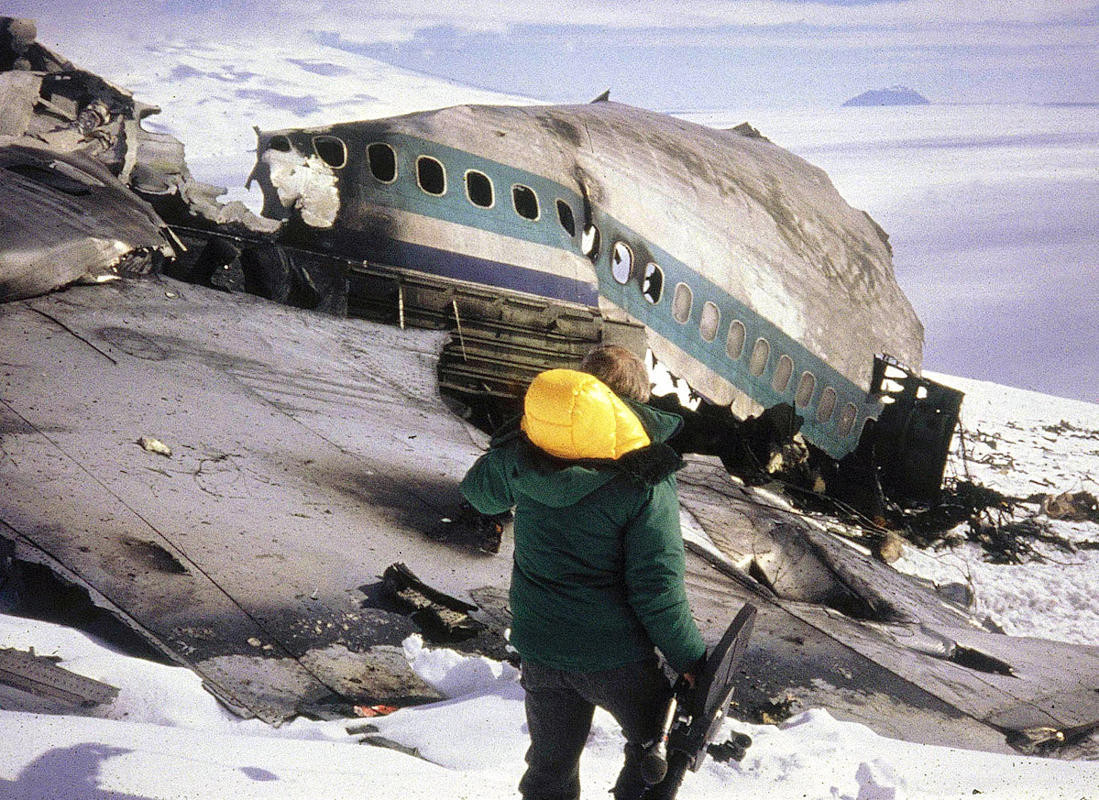
© 2016, Bryan R. Swopes
